
Why Does My Lower Back Hurt? Understanding the Causes and Solutions
Introduction
Lower back pain is a common complaint that affects millions of people worldwide. Understanding the reasons behind this discomfort is crucial for effective management. In this article, we will explore the various causes of lower back pain and provide insights into potential treatments and preventive measures.
Overview of Lower Back Pain
Lower back pain is not only prevalent but can also impact daily activities and overall quality of life. Approximately 80% of adults experience back pain at some point. This section will summarize the anatomy of the lower back, common symptoms, and the importance of seeking appropriate care.
Anatomy of the Lower Back
The lower back, or lumbar spine, consists of five vertebrae numbered L1 to L5. These bones support the upper body, allowing for movement and flexibility. Intervertebral discs cushion these vertebrae, acting like shock absorbers during activities. Ligaments connect the vertebrae, while tendons attach muscles to the spine, providing stability and strength. The sciatic nerve, the longest nerve in the body, runs through this area, making it susceptible to pain and injury.
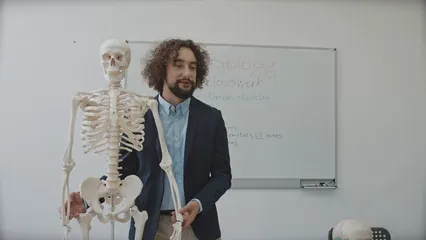
Symptoms
Lower back pain varies widely among individuals. It can be acute, lasting a few days to weeks, or chronic, persisting for three months or longer. Common symptoms include dull aches, sharp or stabbing sensations, and radiating pain that travels down the legs. Other associated symptoms may involve numbness, tingling, and weakness in the lower extremities. Recognizing the type of pain you experience is essential for effective treatment.
To alleviate discomfort, consider using a Heating Pad for Back Pain Relief. It’s like a warm hug for your back, providing soothing relief after a long day of sitting or lifting.
Prevalence
The prevalence of lower back pain is staggering. Studies indicate that up to 85% of people will endure some form of back pain over their lifetime. It is one of the leading causes of missed workdays and skyrocketing healthcare costs. The impact of lower back pain extends beyond physical discomfort, often leading to emotional distress and decreased quality of life.

Seeking Care
If you experience persistent or severe lower back pain, seeking professional care is vital. A healthcare provider can assess your symptoms and recommend appropriate treatment options. Ignoring pain can lead to worsening conditions and prolonged recovery times. Early intervention is crucial, especially if you notice additional symptoms like fever, unexplained weight loss, or changes in bowel and bladder control. Don’t wait for your back to start playing tricks on you—consult a professional!
Causes of Lower Back Pain
Lower back pain can strike for various reasons. Let’s explore some common culprits, focusing on lifestyle factors and injuries or trauma.
Lifestyle Factors
Sedentary Lifestyle
Are you spending hours glued to your chair? A sedentary lifestyle can lead to muscle weakness. When you don’t move, your muscles weaken, especially those that support your spine. Weak muscles often can’t handle daily activities. This can result in discomfort or pain that feels like a nagging reminder to get off the couch.

Obesity
Carrying extra weight is like having a backpack filled with bricks strapped to your lower back. Excess weight puts stress on your spine, leading to pain. Studies show that the higher your body mass index (BMI), the more likely you are to experience lower back pain. So, if you’re packing a few extra pounds, it might be time to consider a health kick!
Improper Lifting Techniques
When lifting, it’s crucial to bend your knees, not your back. Common mistakes include twisting while lifting or using your back instead of your legs. Ever tried to lift a heavy box with a straight back? Ouch! These improper techniques can lead to sprains and strains, leaving you wishing you’d thought twice before playing the hero.
Smoking
Yes, you read that right! Smoking doesn’t just harm your lungs. It also reduces blood flow to your spine, slowing down healing. If you’re a smoker, your body takes longer to recover from injuries, making you more susceptible to lower back pain. Quitting might just lighten your back’s load!
Injury and Trauma
Muscle Strains
Muscle strains are like your back’s way of saying, “Hey, take it easy!” They often occur due to sudden movements, lifting heavy objects, or even awkwardly reaching for something. Symptoms include sharp pain and stiffness. It’s your body’s way of asking for a break.

Sprains
A sprain happens when you stretch or tear a ligament. This can occur during activities like sports, lifting, or even tripping over your own feet. The pain can be debilitating, making it hard to move or even stand up straight. Remember, those ligaments aren’t as forgiving as they seem!
Herniated Discs
Imagine your spine as a stack of jelly doughnuts. A herniated disc occurs when the jelly (nucleus) slips out of the doughnut (annulus), causing pressure on nearby nerves. This can lead to pain, numbness, or tingling down your legs. It’s like a sci-fi horror movie unfolding in your back!
Fractures
Fractures in the spine can result from severe trauma, like a fall or accident. They lead to acute pain and can significantly affect mobility. If you suspect a fracture, it’s essential to seek medical attention immediately. Don’t let your back’s dramatic flair turn into a long-term issue!
Understanding these causes can help you take proactive steps to manage or even prevent lower back pain. Stay tuned for more insights on treatments and preventive measures!
Medical Conditions
Arthritis
Arthritis is a common culprit for lower back pain, especially as we age. Osteoarthritis, the wear-and-tear type, can lead to deterioration in spinal joints. This wear causes inflammation and pain, making everyday movements feel like a chore. On the other hand, rheumatoid arthritis is an autoimmune condition that attacks joint linings, including those in the spine. This can lead to severe discomfort and stiffness, turning even the simplest of tasks into a daunting challenge.
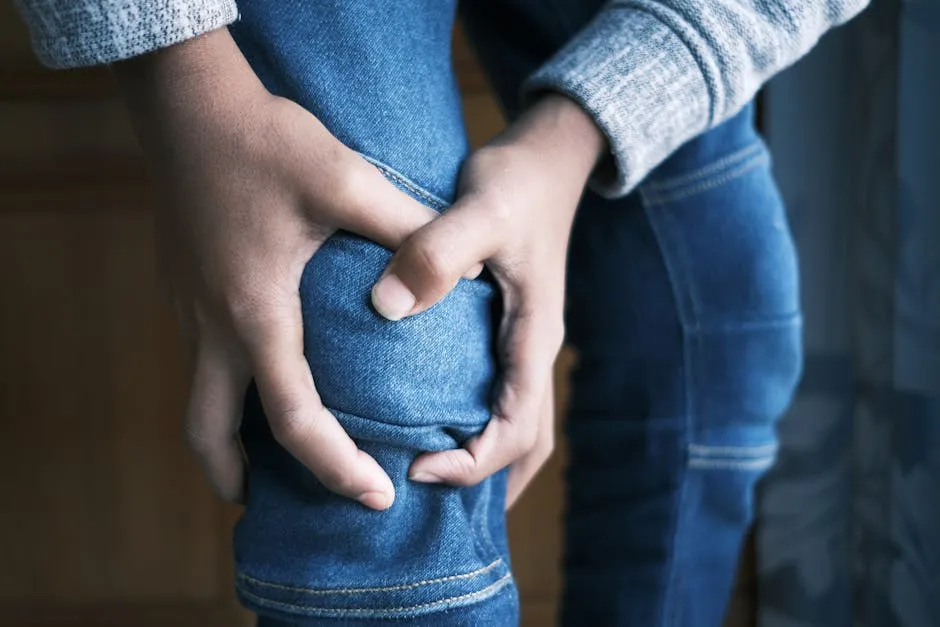
Sciatica
Have you ever felt pain shooting down your leg? That’s sciatica at work! This condition is caused by irritation of the sciatic nerve, which runs from your lower back, through your hips, and down each leg. Symptoms can include a sharp, burning sensation or numbness that radiates down the leg. Sciatica often stems from a herniated disc or spinal stenosis. It’s a pain that can make sitting, standing, or even sneezing feel like an Olympic event!
Spinal Stenosis
Spinal stenosis is the narrowing of the spinal canal. This can put pressure on the spinal cord and nerves, leading to pain and discomfort in your lower back. You may also experience weakness or numbness in your legs. Imagine trying to navigate a crowded subway—tight spaces can be uncomfortable! With spinal stenosis, that’s what your spine feels like. It’s important to seek care if you suspect this condition, as it can significantly affect mobility.

Other Conditions
Lower back pain can also be linked to a variety of other conditions. Fibromyalgia, a disorder characterized by widespread muscle pain, often includes lower back discomfort as a symptom. Kidney issues, such as stones or infections, can also mimic lower back pain. If your back pain feels like it’s coming from the kidneys, it’s time to consult a doctor. After all, nobody wants to mistake kidney stones for a simple backache!
Symptoms of Lower Back Pain
Types of Pain
Acute vs. Chronic Pain
When it comes to lower back pain, the terms “acute” and “chronic” are thrown around quite a bit. Acute pain is your body’s alarm system, often sharp and sudden, lasting a few days to weeks. It’s like a surprise party—unexpected and often unwelcome! Chronic pain, however, hangs around for three months or longer, making its presence known like that friend who overstays their welcome. Understanding which type you have is crucial for effective relief.

Radiating Pain
Radiating pain is when discomfort travels down the legs, and it’s often linked to conditions like sciatica. Imagine your back pain is a dramatic soap opera; it doesn’t just stay in one place! Instead, it spreads its influence, making your legs feel tingly or weak. If your pain radiates, it’s important to pay attention. It could be your body’s way of signaling a more serious issue.
Associated Symptoms
Lower back pain can come with a host of other symptoms. Numbness, tingling, and weakness in the legs are common companions. You might feel like you’re wearing invisible weights on your legs, making it hard to walk. These symptoms can signal nerve involvement and should never be ignored. If they show up at your doorstep, it’s time to pick up the phone and call your healthcare provider.
Severity and Duration
Mild vs. Severe Pain
Pain can range from mild annoyances to severe disruptions. Mild pain feels like a persistent nagging, something you can live with. Severe pain, however, can feel like a freight train hitting you at full speed. It can make moving, sitting, or even breathing feel like an uphill battle. Knowing the difference can help you determine your next steps in management.
When to Seek Medical Attention
Some symptoms scream “call a doctor!” If your pain is constant or severe, especially at night, it’s a red flag. Other warning signs include pain spreading down one or both legs, numbness, or changes in bowel or bladder control. If you’re experiencing unexplained weight loss, don’t wait for an invitation—seek immediate care! Your back deserves attention, and so do you!
Diagnosis of Lower Back Pain
Initial Assessment
Medical History
When you visit a healthcare provider for lower back pain, be ready to spill the tea on your symptoms and lifestyle. They’ll want to know how long the pain has been bothering you, what activities make it worse, and any past injuries. Did you recently attempt to lift a couch solo? It’s all relevant! Sharing this information helps the doctor piece together the puzzle of your pain.
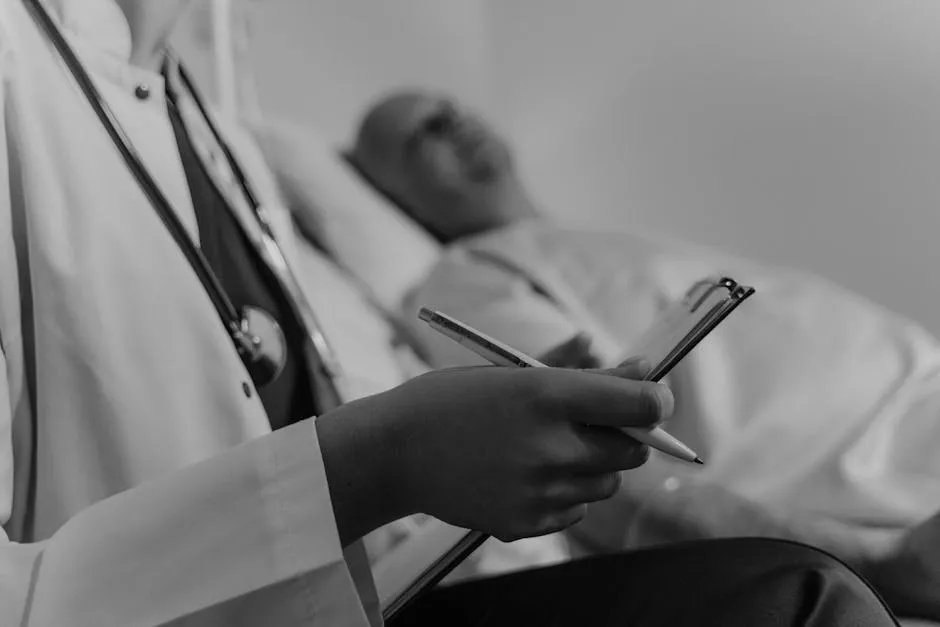
Physical Examination
During the physical exam, expect your doctor to poke and prod (gently, of course) to assess your pain levels and mobility. They may ask you to bend, twist, or lift your legs while they observe your movements. This helps them identify any restrictions or abnormal pain responses. Think of it as a mini workout, but without the fancy gym membership!
Diagnostic Tests
Imaging Tests
If your doctor suspects something more serious, they might recommend imaging tests. X-rays provide a look at your bones, revealing fractures or alignment issues. MRIs and CT scans delve deeper, offering detailed images of soft tissues like muscles, discs, and nerves. These tests can help uncover hidden problems, like a herniated disc, that could be causing your discomfort.
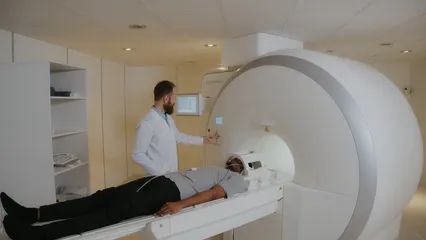
Electromyography
Ever heard of electromyography (EMG)? This nifty test measures the electrical activity of your muscles. It helps diagnose nerve issues by determining how well your nerves communicate with your muscles. If there’s a block in communication, that could be the reason your back is throwing a tantrum. It’s like checking the Wi-Fi signal but for your nerves!
Treatment Options for Lower Back Pain
Home Remedies
Rest and Activity Modification
Finding the right balance between rest and activity is crucial. Sure, you might want to binge-watch your favorite show, but prolonged bed rest can worsen back pain. Instead, try gentle movements and stretches to keep your muscles engaged. Think of it as coaxing your back back to life after a Netflix hibernation.

Ice and Heat Therapy
Ice packs and heating pads are your best friends! For the first 48 hours after an injury, apply ice to reduce swelling. After that, switch to heat to soothe stiff muscles. Just remember: never apply ice or heat directly to your skin. Always wrap it up in a towel—your skin will thank you!
Over-the-Counter Pain Relievers
Sometimes, you need a little extra help. Common pain relievers like ibuprofen or acetaminophen can provide relief. However, always follow the instructions and consult your doctor if you have any concerns. Pain relief shouldn’t feel like a game of Russian roulette!
By addressing both diagnosis and treatment options, you can take meaningful steps toward understanding and managing your lower back pain. Stay tuned for more insights and tips to keep your back healthy!
Physical Therapy and Exercise
Rehabilitation Programs
Rehabilitation programs are like a superhero team for your back! They focus on strengthening the muscles that support your spine. By engaging in tailored exercises, you can improve flexibility and reduce discomfort. A skilled physical therapist will assess your needs and create a plan just for you. Think of it as a personal trainer, but instead of sculpting biceps, you’re working on back resilience. These programs can help restore mobility and prevent future injuries. Who knew getting fit could also mean saying goodbye to back pain?
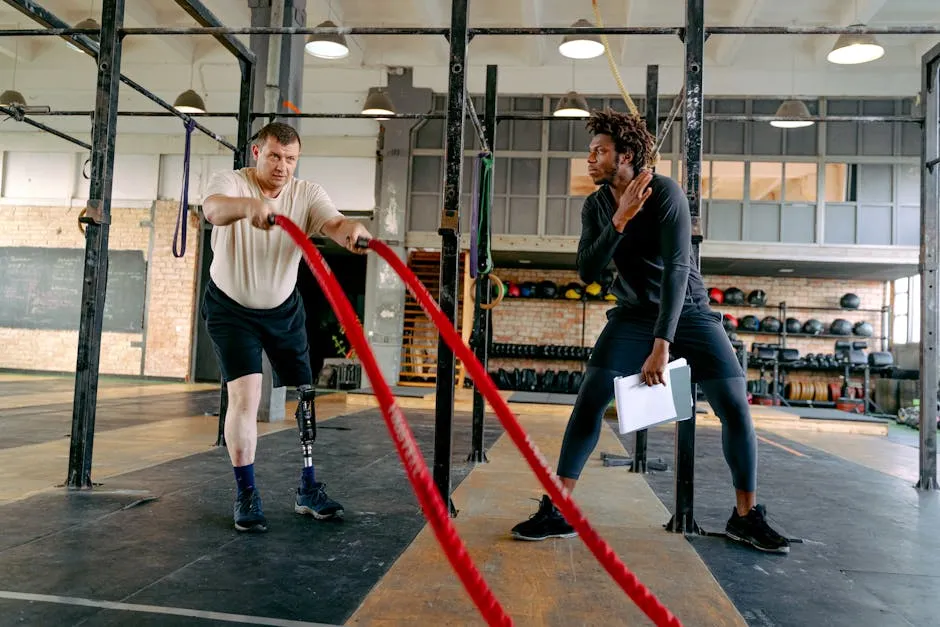
Recommended Exercises
Ready to stretch and strengthen? Here are some effective exercises to consider:
- Knee-to-Chest Stretch: This gentle stretch relaxes your lower back and hips. Lie on your back, pull one knee towards your chest, and hold for 15-30 seconds. Feel that release!
- Child’s Pose: A classic yoga stretch, this one elongates your spine and relaxes your back muscles. Kneel on the floor, sit back on your heels, and stretch your arms forward on the ground. Breathe deeply—ahhh, bliss!
- Cat-Cow Stretch: This dynamic stretch promotes flexibility. Start on all fours, arch your back like a cat, then dip your belly and lift your head like a cow. Repeat for 10-15 reps. Your spine will thank you!
- Superman Exercise: Strengthen those back muscles! Lie face down, extend your arms and legs, and lift them off the ground simultaneously. Hold for a few seconds, then lower. Repeat 10 times. You’ll feel like a superhero in no time!
- Bird-Dog: Balance and stability are key! From an all-fours position, extend one arm and the opposite leg simultaneously. Hold for a few seconds, then switch sides. Aim for 10-12 reps on each side for a solid core workout.
Medical Treatments
Prescription Medications
When over-the-counter pain relievers just don’t cut it, prescription medications may be the answer. Options include muscle relaxers, which ease spasms and tension, and anti-inflammatory drugs to reduce swelling and pain. Your doctor will guide you on what’s best for your situation—after all, they’re the experts! Keep in mind, medication is often best used in conjunction with other treatment options for optimal relief.
Injections
If you’re still hurting, injections may provide relief. Epidural steroid injections deliver anti-inflammatory medication directly into the space around your spinal cord. This can alleviate pain and reduce inflammation, providing temporary relief. Nerve blocks work similarly, targeting specific nerves causing discomfort. These treatments can help you regain mobility and enjoy life without the constant reminder of back pain.
Surgery
Surgery isn’t the first step for most, but it can be necessary in certain cases. If conservative treatments fail, surgical options may be explored. Common procedures include discectomy (removing part of a herniated disc), spinal fusion (joining two vertebrae), and laminectomy (removing part of the vertebra to relieve pressure). Surgery can seem daunting, but for some, it’s the ticket to a pain-free life. Always consult with your healthcare provider to determine the best path forward.
Preventive Measures
Lifestyle Changes
Exercise Regularly
Think of exercise as your back’s best friend! Regular physical activity strengthens core muscles, improves flexibility, and keeps your weight in check. Whether it’s walking, swimming, or yoga, find an activity you enjoy and make it a habit. Your back will thank you for it!

Maintain a Healthy Weight
Your diet plays a significant role in your back’s health. Excess weight increases strain on your spine, leading to discomfort. Focus on balanced meals rich in fruits, vegetables, lean proteins, and whole grains. Remember, you’re not just feeding your body; you’re also supporting your spine!
Proper Ergonomics
Are you sitting comfortably? Ensuring proper ergonomics in your workspace or home can help prevent back pain. Invest in a supportive chair, keep your feet flat on the floor, and adjust your computer screen to eye level. Your posture matters! Small adjustments can lead to significant improvements in your back health.
To enhance your workspace comfort, consider a Ergonomic Office Chair. The right chair can make a world of difference in your posture and overall comfort while working.
Regular Check-Ups
Importance of Monitoring
Scheduling regular check-ups with your healthcare provider can help catch potential issues early. They can assess your spine’s health and recommend necessary adjustments to your routine. Think of them as your back’s personal coach!
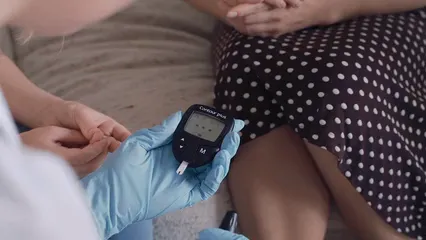
Early Intervention
Addressing problems promptly can prevent chronic pain from developing. If you notice persistent discomfort or any concerning symptoms, don’t hesitate to seek medical advice. Taking action early can save you from a long road of recovery later on.
Conclusion
Lower back pain is a multifaceted issue with a variety of potential causes and treatments. Understanding these factors is key to effective management and prevention. If you experience persistent pain or concerning symptoms, it’s vital to consult a healthcare professional for tailored advice and care. Don’t let back pain hold you back—take action today!
For those looking for further insights, check out a Back Pain Relief Book to dive deeper into strategies and tips for managing your discomfort!
Please let us know what you think about our content by leaving a comment down below!
Thank you for reading till here 🙂
And if you’re feeling adventurous, why not try some Yoga Mats for some relaxing stretches? Your back will thank you for the love!
All images from Pexels




